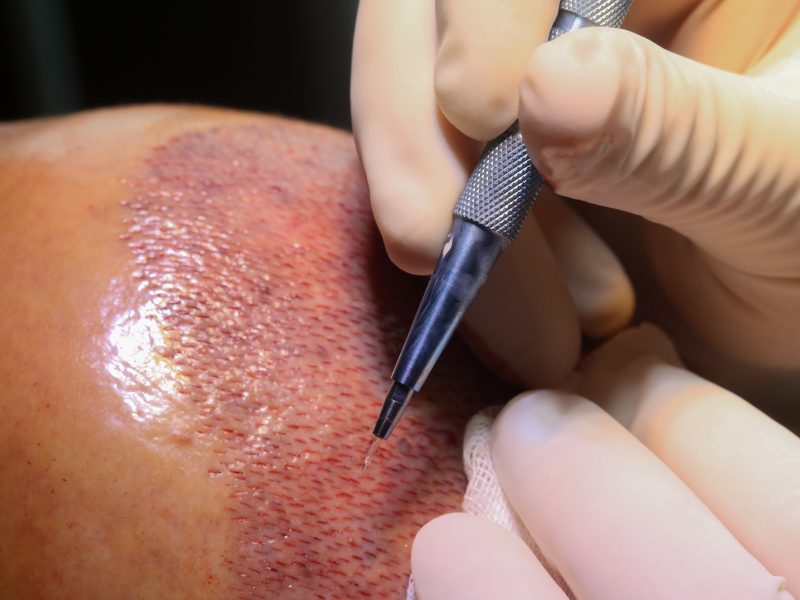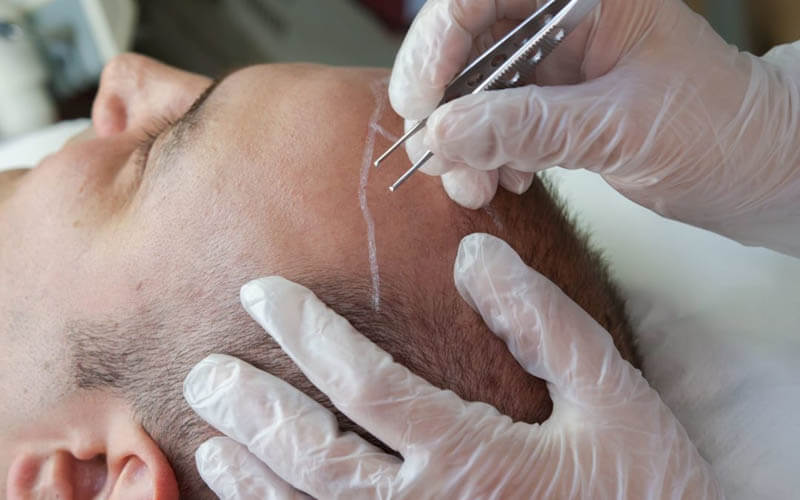Are you tired of feeling self-conscious about your thinning hair or receding hairline? If so, you may have considered hair transplantation as a possible solution. While this surgical procedure can effectively restore lost hair, it also comes with its own set of risks and benefits to consider. In this blog post, we’ll dive into the world of hair transplantation and help you understand what to expect from the process. Whether you’re considering undergoing a transplant yourself or just curious about how it all works, read on for an in-depth look at one of modern medicine’s most fascinating procedures!
Table of Contents
What is Hair Transplantation?
Hair transplantation is a surgical procedure that involves taking hair from one area of the head and transplanted to bald or thinning areas. The most common type of hair transplant is called follicular unit transplantation. This involves taking small, naturally occurring groupings of hairs, called follicular units, from the donor area and transplanting them to the balding or thinning areas.
Follicular unit transplantation offers many advantages over other types of hair transplants. One advantage is that it can produce very natural-looking results. Another advantage is that follicular units contain their own blood supply, which helps them survive the transplantation process and continue to grow in their new location.
However, there are also some risks associated with hair transplantation. One risk is that the transplanted hair may not match the color and texture of the surrounding hair. Another risk is that the body may reject the transplanted hair, resulting in inflammation and scarring. Finally, there is a small risk of infection at the surgical site.
Who is a Good Candidate for Hair Transplantation?
A good candidate for hair transplantation is someone who:
-Is experiencing hair loss
-Has healthy hair follicles
-Has realistic expectations
-Is willing to undergo a surgical procedure
Risks of Hair Transplantation
One of the most common concerns among those considering hair transplantation is the risk of complications. While the procedure is generally safe, there are potential risks that should be considered before undergoing treatment.
The most common complication from hair transplantation is infection. This can usually be avoided by taking antibiotics before and after the procedure. Other potential complications include bleeding, swelling, and bruising. These are typically mild and resolve on their own within a few days.
There is also a small risk of scarring. The scars are usually not visible unless the hair is shaved very short. In rare cases, keloid scars can form, which are raised and thicker than regular scars. These can be difficult to treat and may require surgery to remove.
Overall, hair transplantation is a safe procedure with minimal risks. However, as with any surgery, there are always potential complications that should be discussed with your doctor prior to treatment.
Benefits of Hair Transplantation
Hair transplantation can offer a number of benefits, including:
1. restoring hair to a balding or thinning scalp
2. filling in areas of the scalp that have been damaged by injury or surgery
3. providing a more youthful appearance
4. boosting self-confidence
5. improving quality of life
Cost of Hair Transplantation
Hair transplantation is a surgical procedure that involves taking hair from one area of the scalp and transplanted to another area. The cost of hair transplantation can vary depending on the method used, the number of grafts needed, and the experience of the surgeon.
The most common method of hair transplantation is follicular unit extraction (FUE). FUE is a minimally invasive technique where each follicular unit (containing 1-4 hairs) is individually harvested from the donor area and transplanted to the recipient area. The advantage of FUE over other methods is that it allows for a quicker recovery time and there is no linear scar in the donor area. However, FUE is a more expensive procedure than other methods due to the time involved in harvesting each follicular unit.
Another popular method is follicular unit transplantation (FUT). FUT is a technique where a strip of skin containing hair follicles is removed from the donor area and then individual follicular units are dissected from this strip and transplanted to the recipient area. The main advantage of FUT over FUE is that it allows for a higher density of grafts to be transplanted in one sitting. However, FUT does leave a linear scar in the donor area which may be visible if your hair is worn short.
The number of grafts needed will depend on the extent of hair loss you are experiencing. For example, if you are only experiencing thinning in one specific
Alternatives to Hair Transplantation
There are a number of alternative treatments to hair transplantation, each with its own set of risks and benefits. These alternatives include:
· Scalp reduction: Scalp reduction is a surgical procedure in which the area of bald skin on the scalp is removed. This can be done either by cutting out a section of skin, or by stretching the remaining skin. Scalp reduction can be used to treat both male- and female-pattern baldness.
· Hairpieces: Hairpieces, also called toupees, are artificial hair pieces that can be worn to cover up baldness. They come in a variety of colors and styles, and can be made from real or synthetic hair.
· Hair extensions: Hair extensions are strands of real or synthetic hair that are attached to existing hair to add length or fullness. Extensions can be temporary or semi-permanent, and are available in a variety of colors and styles.
· Wigs: Wigs are another option for covering up baldness. They can be made from real or synthetic hair, and come in a variety of colors and styles.
How to Prepare for Hair Transplantation
If you are considering hair transplantation, it is important to understand the risks and benefits of the procedure. Hair transplantation is a surgical procedure that involves taking hair from one area of the head and transplanted to another area. The most common type of hair transplantation is called follicular unit transplantation. This type of surgery takes hair follicles from the back of the head, which are then transplanted to the balding or thinning areas of the head.
There are several things you can do to prepare for hair transplantation surgery. First, you should consult with a surgeon who specializes in hair transplantation. During your consultation, be sure to ask about the surgeon’s experience and success rates with the procedure. You should also ask about any potential risks and complications associated with hair transplantation surgery.
Once you have chosen a surgeon, you will need to prepare for the surgery itself. This includes getting lab work and blood tests done prior to the surgery date. You will also need to wash your hair with a special shampoo and avoid sun exposure for two weeks before the surgery. On the day of surgery, be sure to eat a light breakfast and wear loose-fitting clothing.
Conclusion
Hair transplantation is a viable solution for those looking to restore their hair and confidence. Knowing the risks and benefits of this procedure will help you make an informed decision about whether it’s right for you. If you are worried about your receding hairline or thinning locks, don’t hesitate to contact a board-certified professional who can weigh in on the process and set realistic expectations surrounding results.

You May Also Like:DHI vs FUE: Which natural hair line technique is right for you?


